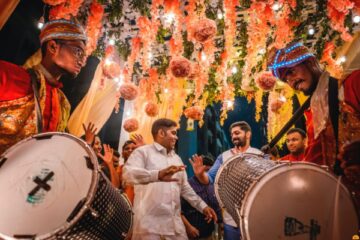We have always loved to listen to stories since childhood. Bedtime stories and Grandma’s stories were our favorite entertainment and way to learn. Dance too has a crucial role in storytelling and conveying messages to the masses. In this blog let us understand how storytelling is a vital part of dance and how it helps to connect heart to heart with the audience.
Importance of Storytelling in Dance
Dance is not just a rhythmic type of movement. It is s connection between the almighty and human being. Our Mythological literature is great evidence that connects a human being to god. Dance is a driver that helps the layman to understand the teachings of gods and saints through their performing skills and actions.
Dance also helps the audience to introduce our religion, tradition, and culture. It is a bridge that connects beliefs and illiteracy. Dance also breaks the barriers of superstitions and introduces the world to the modern era. Nowadays, dance has evolved to convey morals and technology through dance.
The new generation is unaware of great men who sacrificed their lives for the nation and their community. Performing arts like dance make them aware of their lives through stories.
Dance not only depicts history and mythology but also portrays day-to-day activities through simple gestures and mime acts.
Dance also introduces the nine emotions i.e. the Navrasas like anger, happiness, sorrow, romance, pride, disgust, fear, surprise, and peace. The audience also feels every emotion along with the performer.
Ultimately, dance is the perfect combination of entertainment and storytelling which can easily connect the audience.
Types of Narratives used in dance
Mythology has an important role in storytelling and narrating through performing arts. Use of music and body gestures the dancer performs different stories and connects with the audience.
The most common narratives used in dance are from the epic books of Ramayan and Mahabharat. Short stories in these two epic books help the audience to imagine the characters in the stories. These two books are very common as they not only entertain or are known amongst the audience but teach values and convey the message of life.
Mythological stories also include Stories of Ganesha, Shiva, Parvati Vishnu, and Devi where they tell about power and wisdom.
Other epic poets like Kalidas narrate romance and teach us moral values.
Other than romance, the dance stories also show love between god and devotees where the god incarnates to help their devotees and bless them.
It is said that the Kathak dance style hailing from Uttar Pradesh literally means the one who tells stories through their dance form.
In the modern era, the performers experiment with writing stories which are done in day-to-day lives. The stories also include history, the war, pre-independence period, where they mention freedom fighters who gave their lives for freedom.
How you can present storytelling in dance
First and foremost, a lot of research is required. Reading different books, listening to stories, and communicating with the scholars will help you to present your performance and add stories to your dance. Stories easily connect with the audience and grab their attention.
Always remember that dance is a perfect combination of bodily gestures and expressions. So, the more you add stories into your choreography the more successful your performance will be.
Now it is time to choreograph your performance. Understand the location of your audience.
Indian Mythological stories might not be as effective with young populations or in other countries where they are unaware of Indian culture. So, it is completely your skill how to connect with your audience, and what stories to tell them. I mean there was an exceptional case where my guru presented Saint Kanhopatra and Lord Vithal’s story in a Western country and the audience was balling in tears while watching the story. Sometimes stories don’t need any language barriers.
In a nutshell, Storytelling does play an important role in dance and it helps in connecting emotionally with the audience.


2 Comments
Regina Bloomer · March 19, 2024 at 11:29 AM
I am sure this post has touched all the internet
viewers, its really really good article on building up new webpage.
5 best Anchoring tips for dancers for an impressive performance - Dancer pens · January 23, 2025 at 3:24 PM
[…] your research and depth will in turn demonstrate while you are speaking to the audience. Sometimes, Storytelling also […]